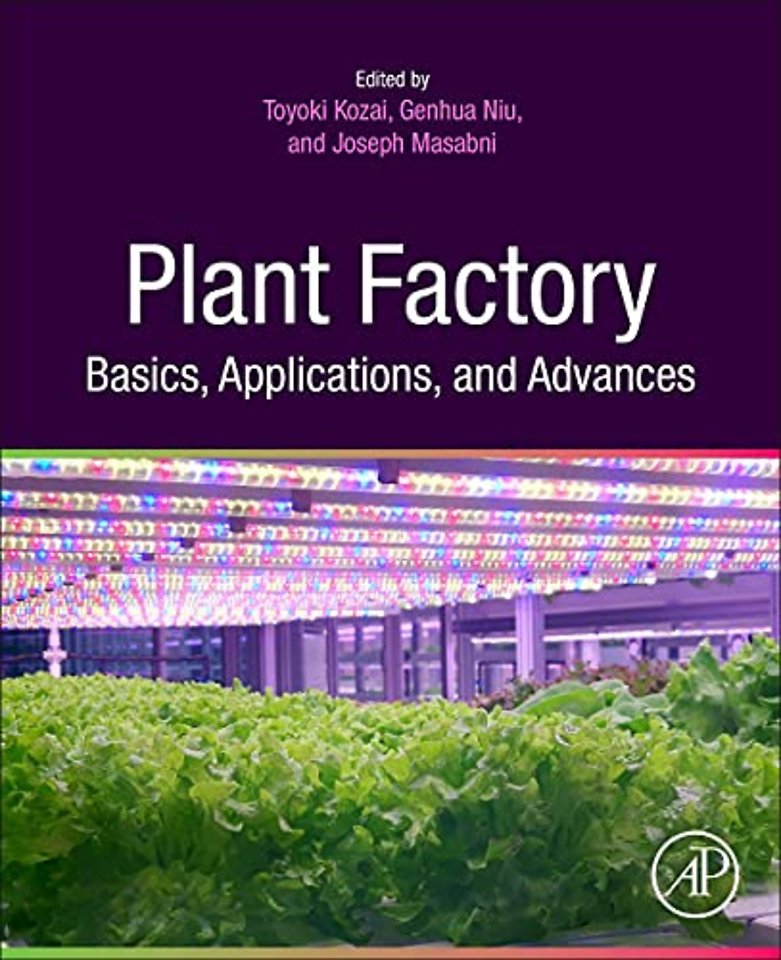Plant Factory Basics, Applications and Advances
Samenvatting
Plant Factory Basics, Applications, and Advances takes the reader from an overview of the need for and potential of plant factories with artificial lighting (PFALs) in enhancing food production and security to the latest advances and benefits of this agriculture environment. Edited by leading experts Toyoki Kozai, Genhua Niu, and Joseph Masabni, this book aims to provide a platform of PFAL technology and science, including ideas on its extensive business and social applications towards the next-generation PFALs.
The book is presented in four parts: Introduction, Basics, Applications, and Advanced Research. Part 1 covers why PFALs are necessary for urban areas, how they can contribute to the United Nations' Sustainable Development Goals, and a definition of PFAL in relation to the term "indoor vertical farm." Part 2 presents SI units and radiometric, photometric, and photonmetric quantities, types, components, and performance of LED luminaires, hydroponics and aquaponics, and plant responses to the growing environment in PFALs. Part 3 describes the indexes and definition of various productivity aspects of PFAL, provides comparisons of the productivity of the past and the present operation of any given PFALs, and compares PFALs with one another from the productivity standpoint by applying the common indexes. Part 4 describes the advances in lighting and their effects on plant growth, breeding of indoor and outdoor crops, production of fruiting vegetables and head vegetables, and concluding with a focus on a human-centered perspective of urban agriculture.
Providing real-world insights and experience, Plant Factory Basics, Applications, and Advances is the ideal resource for those seeking to take the next step in understanding and applying PFAL concepts.

